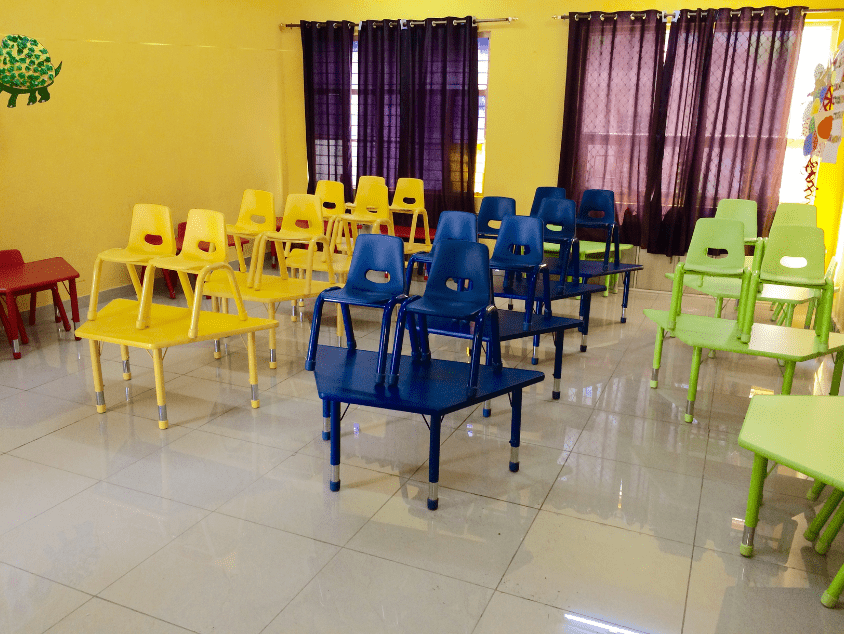Interview with Neeraj Arora, Director

Mango Institutional Furniture manufactures kindergarten & classroom furniture to provide kids a safe and functional, yet inspirational space to learn. Mr. Neeraj Arora, Director of the company shares his vision about the future of education and latest innovations.
What is your vision of transformation of education in the next 2 decades?
Over the last 2 decades, the education scenario has undergone remarkable changes. Not only the enrollment numbers have increased, but there has been a rise in the learning outcomes as well. With regard to secondary education, government increased spending on higher education by 37 percent from 195.1 billion in 2011 to 267.5 billion in 2013-14. However, a lot still needs to be done in the area, and likewise, making rapid progress over the next two decades would require focused efforts from not only the government, but also the academia and industry.
Over the next 2 decades, the vision is to:
1. Have students across age, gender, and economic strata have access to primary and secondary education.
2. Address issues related to school dropouts; ensure that girls have as much access to education as boys.
3. Work towards providing quality education in primary and secondary schools; encourage teaching and learning through out of the box methods, making learning fun and stress free.
4. Ensuring that children and teachers have access to the basic infrastructural facilities required for seamless learning.
5. Build the capacity of teachers, fill in the gaps in terms of their availability
6. Facilitate secondary and higher education and make requisite arrangements for ensuring their availability and accessibility across the country.
These are some of the issues that are to be addressed in the coming years. What is the need of the hour is place the students at the core of the globalized world, making changes in the education system accordingly, so that each child is equipped and at par with what the world has to offer in the coming years. A realistic, replicable, customized, and time bound road map needs to be in place in order to bring about a positive transformation in the education scenario.
Where do you see this change happening?
Changes, these and others, are happening at every level, since education is a fluid field. New innovations are happening every day, and the world is warming up to things that a few years down the line were not considered a typical part of education. Things like the usage of ICT are not very old. However, their acceptance has been to the level where they are now being seen as “the” favorable pedagogy. Having said that, it is also important that the required changes happen at multiple levels, and by that, I not only mean the primary or secondary education. More and focused agencies need to be brought to the fold, and that includes the government, the academic and education bodies, schools, students, parents, and even the corporate. Only when the efforts are made in complementary to each other, will the scenario change for the better.
What is the main challenge that India needs to face to attain UN Sustainable Development Goals?
Much like the sustainable goals, the challenges for India attaining the UN SDGs are many. The sheer enormity of the country in terms of the size and population, and with diversity at every corner requires the programmes to be customizable. The other challenges include:
Financing SDGs: A new study estimates that implementing SDGs in India by 2030 will cost around US$14.4 billion. Unless states devote a significant portion of their resources on the social sector, there is likely to be a significant funding crunch. This is where co-financing comes into picture and can be a possible medium to fill in the gap.
Effective Monitoring and Evaluation mechanisms: If states are expected to play a pivotal role it will require ownership not just nationally, but also at the state and local level. Which means that every state implementing policies is required to have the bandwidth for not only implementing the programmes, but also to monitor them effectively.
Measuring Progress: And there is the question of measuring progress or achievement. Non-availability of data, periodicity issues and incomplete coverage of administrative data, made accurate measuring progress of even MDGs virtually impossible, and likewise the above issues will also be of importance when it comes to measuring the progress of SDGs and their achievement.
These challenges aside, it is important to remember, that while SDGs provide broad goals and targets, it will be up to the national, and state governments to identify priorities, and decide appropriate locally relevant policies, and have an appropriate monitoring mechanism in place.
Which innovation (in respective sector) in the last financial year has caught your attention?
One innovation that I specifically remember from last year are the robotic kits. They were low cost, interesting, and new. Given that we specifically work in rural schools, something like this is totally unseen and would help in retaining and engaging the attention span of children, besides making difficult concepts interesting.
Where do you see the role of Private Sector (the sector you are targeting) in education in India?
Private sector has a crucial role to play in the sector of Education. They can be a crucial when it comes to meeting the funding gap. Secondly, they have pan India presence which means that they can reach out to the disadvantaged areas (those areas where the government is finding it difficult to gain access). In addition, private sectors can also work on creating models on Education that can be result oriented and replicable. Bringing about a large scale change in not something that can be done single-handedly and that is where collaboration creates a win-win situation for everyone.


